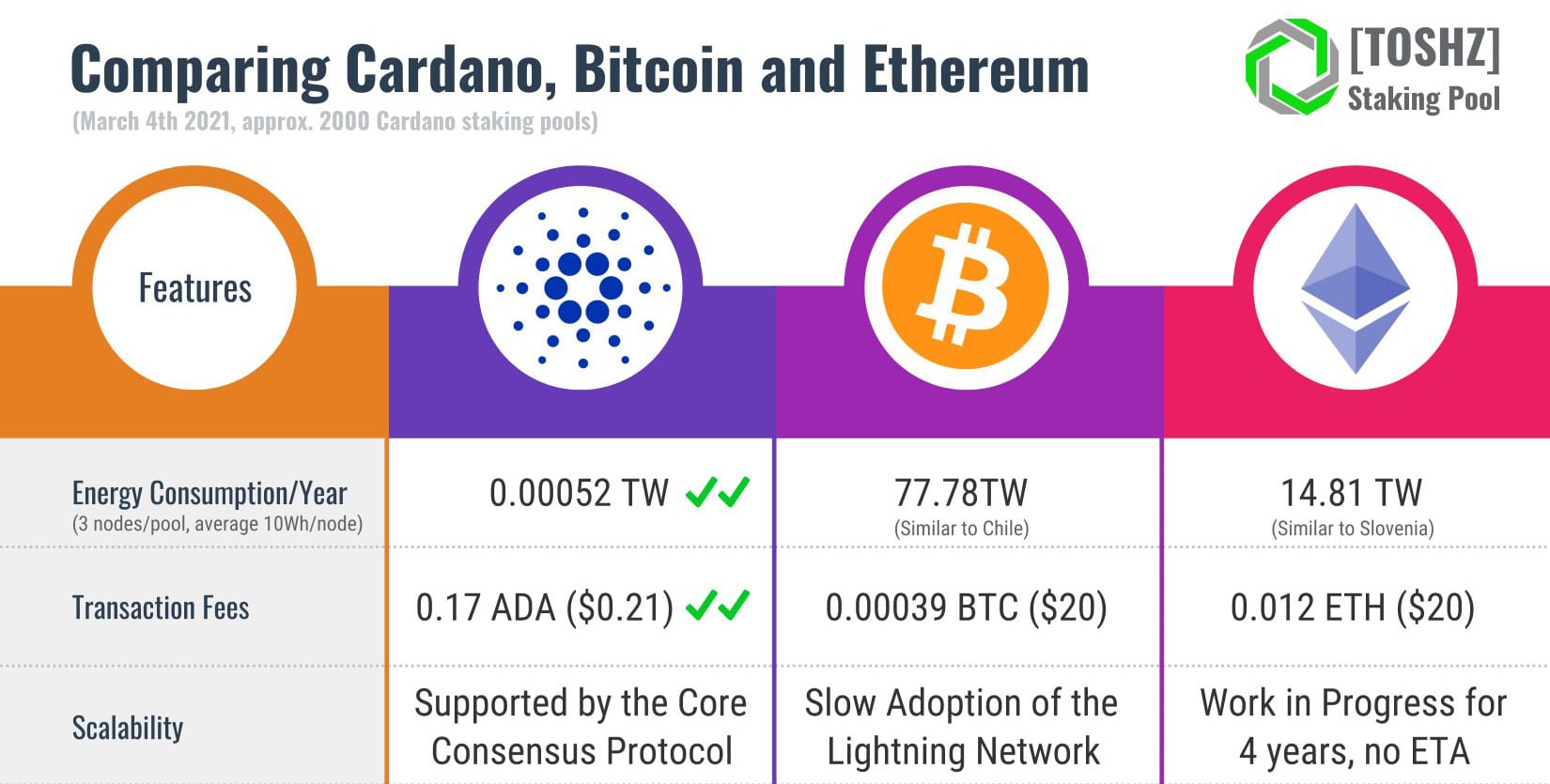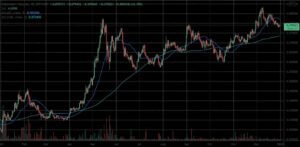What is Cardano? This blockchain project was founded in 2015 by Charles Hoskinson and its ICO raised $62,240,000. The Cardano mainnet was then launched in September of 2017.
The aim of this smart contract blockchain platform is to become the backbone infrastructure of a Secure, Decentralized and Scalable financial operating system.
That’s a mouthful. Let’s unpack that.
The blockchain trilemma
Charles Hoskinson, after leaving Ethereum, which he co-founded alongside Vitalik Buterin, Gavin Wood (founder of Polkadot) and others, decided to have another go in this nascent space and devoted his experience into building Cardano.
In his famous whiteboard session video:
IOHK | Cardano whiteboard; overview with Charles Hoskinson
Charles gave an overview of the state of the blockchain space in 2017, with Bitcoin being a 1st Generation blockchain while Ethereum belonging to the 2nd Generation. Cardano is a 3rd Generation blockchain and it aims to solve the shortcomings of the previous Generations and address the blockchain trilemma.
As per the definition from CoinMarketCap:
“The blockchain trilemma is a concept coined by Vitalik Buterin that proposes a set of three main issues — decentralization, security and scalability — that developers encounter when building blockchains, forcing them to ultimately sacrifice one “aspect” for as a trade-off to accommodate the other two”.
To give a couple of examples, both Bitcoin and Ethereum can be described as Decentralized and Secure, but without layer 2 solutions, they incur into Scalability issues.
Binance Smart Chain on the other hand, has sacrificed Decentralization for Scalability.
Cardano is not immune to this trilemma, and after focusing meticulously on Security and Decentralization, the next Basho Era in its roadmap will focus on Scalability with layer 2 solutions such as the much-awaited Hydra.
Proof of Work vs Proof of Stake
A heated topic in the crypto space is the environmental consequences of blockchains that use the Proof of Work (PoW) consensus mechanism required for block production and validation.
Besides the high consumption of electricity, which exceeds that of Poland for Bitcoin and that of Austria for Ethereum on an yearly basis, these two blockchains also produce staggering amounts of electronic waste, with Bitcoin generating 25,060 tonnes yearly, comparable to the small IT equipment waste of the Netherlands. This is caused by the mining farms which very often replace the burned out equipment. Data from Digiconomist.
Conversely, with its Proof of Stake (PoS) consensus mechanism, Cardano’s network doesn’t rely on processing power for block validation. What is required is a stable internet connection and enough staked ADA to produce blocks. There are also some SPOs who run their stake pools on a Raspberry Pi, consuming about 5 Watts of energy.
This is the reason why Cardano is often referred to as an eco-friendly blockchain ecosystem.

So, instead of miners like in Bitcoin and Ethereum, the network is secured by, at the time of writing this article, nearly 3000 Stake Pool Operators (SPO), who by pledging their ADA and receiving delegation from ADA holders, participate in a lottery to produce blocks, allowing delegators to receive a yearly ROA (Return on ADA) of 4-5%.
To learn more about SPOs, check out our Cardano SPO Column here on The Cryptonomist.
The peer-review approach
Something else that distinguishes Cardano is its scientific modus operandi with peer-review.
There are three major entities working on the growth and development of this blockchain ecosystem:
- IOHK (Input Output Hong Kong) is one of the world’s pre-eminent blockchain infrastructure research and engineering companies. They are a fully decentralized remote working organization committed to the highest principles of academic rigour and evidence-based software development.
- Cardano Foundation is an independent Swiss-based non-profit that oversees and supervises the advancement of Cardano. It sets the direction for decentralized economic empowerment, working with regulators in different jurisdictions to shape blockchain legislation and commercial standards, and empowering the Cardano community to leverage the Cardano protocol to solve real-life problems.
- EMURGO is a global blockchain technology company providing solutions for developers, startups, enterprises, and governments. EMURGO develops enterprise-grade applications, builds developer tools, invests in startups, and provides blockchain education.
IOHK (soon to be rebranded to IOG – Input Output Global) states on their website:
“The vision for IOHK Research is to be a leading institution in the academic study of fintech blockchain infrastructure. We are establishing a reputation for tackling difficult research questions and for building a strong foundation in the fintech blockchain infrastructure industry”.
Many critics of Cardano refer to its slow progress, however, that is the cost of going through the peer-review process and publishing the scientific papers. Cardano’s philosophy is that it’s better to take the time and make sure everything works correctly before deploying solutions that handle enormous amounts of value and personal data.
Here’s an analogy involving Ethereum that often circulates within the Cardano community:
“Upgrading Ethereum is like trying to repair an airplane that has already taken off, it’s both extremely hard and dangerous. Cardano developers, on the other hand, have been working hard for years to make sure that before lift off, the infrastructure was provably secure and, most importantly, upgradeable in the future”.
To conclude
Only time will tell whether Cardano or some other blockchain will rule the crypto space, though what is more realistic is that we will have an internet of blockchains, and the developers behind Cardano are well aware of this. This is evidenced by their effort in creating an NFT bridge with Ethereum and an ERC-20 Converter.
Interoperability and cooperation between blockchains are essential. In the end, the common goal is to create an economic system that can be accessed by anyone anywhere, allowing the unbanked to start building a financial reputation free from intermediaries, which have disappointed us repeatedly throughout history.
The post What is Cardano? An overview of the eco-friendly blockchain appeared first on The Cryptonomist.

















